- 한국어
- English
- 日本語
- 中文
- العربية
- Español
- Français
- Deutsch
- Pусский
- Tiếng Việt
- Indonesian
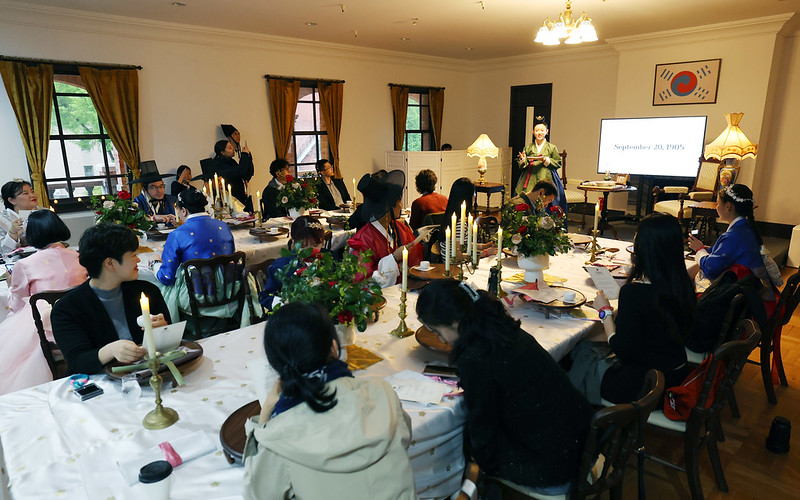
The event "Emperor's Dining Table" is held in English on May 1 for foreign visitors at Jungmyeongjeon Hall of Deoksugung Palace in Seoul's Jung-gu District.
By Jeon Misun
Photos = Lee Jeongwoo
In 1905, the Korean Empire receives a guest from a major global power just two months before the conclusion of the Eulsa Treaty, which deprives Korea of its sovereignty. Alice Roosevelt is the daughter of then U.S. President Theodore Roosevelt, and her visit could change the fate of the troubled empire.
So what type of food should be served to her at a banquet?
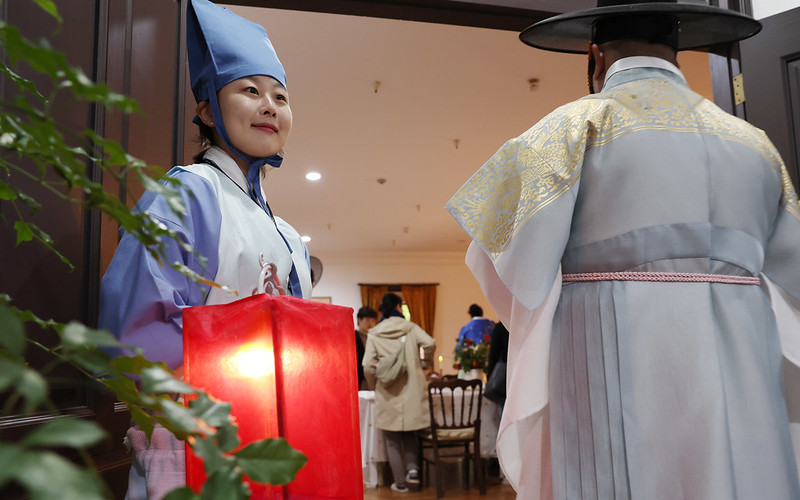
A court lady guides a VIP guest at the banquet hall.
One hundred twenty years later, the banquet is held again at the palace.
"The Emperor's Dining Table" is part of the 11th K-Royal Culture Festival, which kicked off on April 26 at the five royal palaces in Seoul -- Gyeongbokgung, Changdeokgung, Changgyeonggung, Deoksugung and Gyeonghuigung -- and Jongmyo Shrine. The event is the country's largest culture festival and attracts hundreds of thousands of visitors.
A version of the event for foreign diners was launched this year at Jungmyeongjeon Hall of Deoksugung, serving the royal cuisine of the empire and hearing in English the background and significance of the royal banquet. The program reenacts the empire's cuisine and dining atmosphere for Western guests from 1897 to 1910.
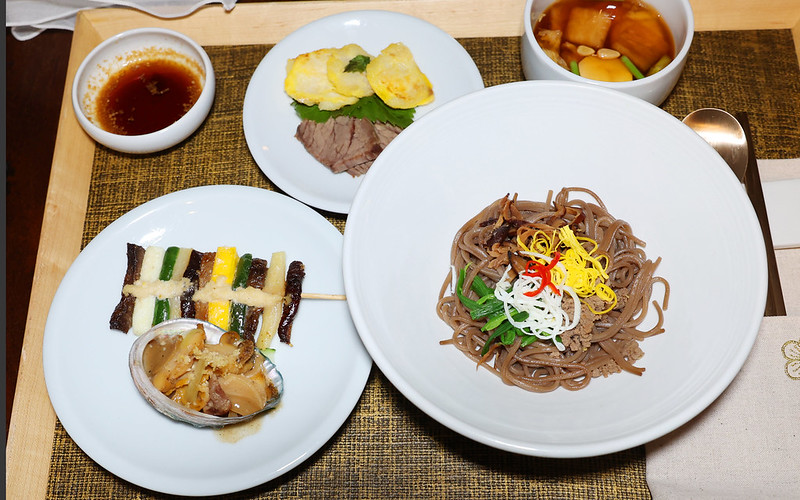
The dishes served in "The Emperor's Dining Table (clockwise from bottom right) are goldongmyeon, or noodles with various toppings and seasoning; jeonbokcho, or boiled abalone in seasoned soy sauce; hwayangjeok (color-arranged food skewers); chojang, or sauce made with soy sauce and vinegar; jeonyueo (pan-fried white fish), pyeonyuk (thinly sliced beef brisket); and jang kimchi, or water kimchi made with cabbage and radish and seasoned in soy sauce.
The formal meal based on the cuisine of the time featured a lavish presentation and the following dishes: goldongmyeon, or noodles with various toppings and seasoning; jang kimchi, or water kimchi made with cabbage and radish and seasoned in soy sauce; hwayangjeok (color-arranged food skewers); jeonbokcho, boiled abalone in seasoned soy sauce; jeonyueo (pan-fried white fish), pyeonyuk (thinly sliced beef brisket) and chojang, or sauce made with soy sauce and vinegar.
Complete with traditional desserts, the table setting reflected Emperor Gojong's philosophy of expressing the nation's standing through "our food" (royal cuisine) in diplomacy as well as directly displaying the royal court's sincerity and pride.
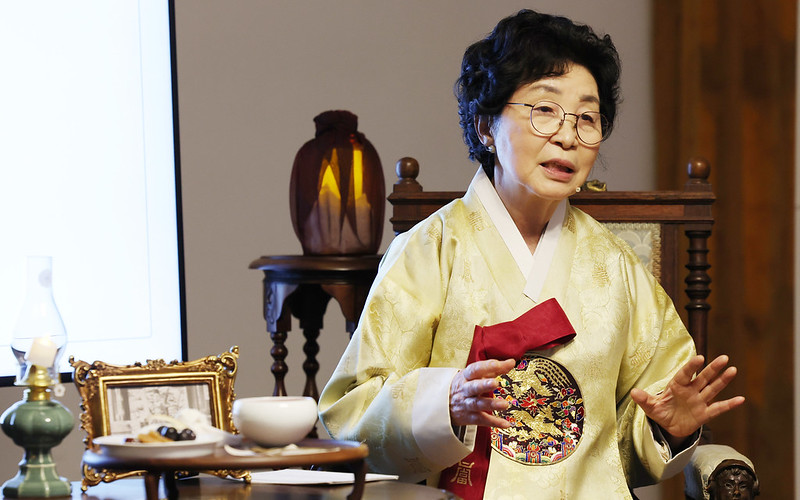
Han Bok-ryeo, a master chef of traditional cuisine, explains how she planned "The Emperor's Dining Table."
Han Bok-ryeo, a master chef of traditional cuisine and holder of national intangible cultural heritage (royal cuisine of the Joseon Dynasty), studied and restored all of the event's food. "Royal cuisine is precious cultural heritage that must be preserved," she said. "I wanted to convey the depth and diversity of Hansik (traditional food) through the royal court cuisine of Joseon, not just the typical Korean food most think of."
After opening its ports, the empire faced a turning point when accepting Western influences. Most believe that the royal court served Western-style course meals to Western guests, but "The Emperor's Dining Table" is a reminder of the wisdom and pride of Koreans back then who proudly presented their cuisine on the diplomatic stage.
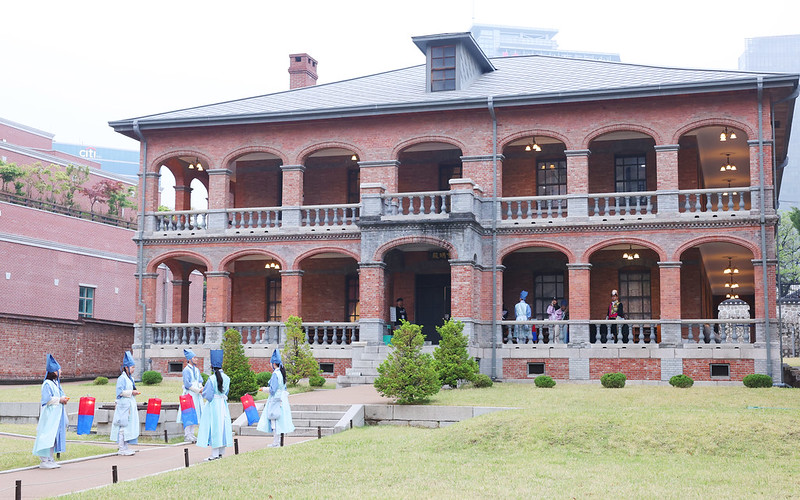
"The Emperor's Dining Table," part of the K-Royal Culture Festival, is held on May 1 at Jungmyeongjeon Hall of Deoksugung Palace in Seoul's Jung-gu District.
Hansik was served at a luncheon in 1905 at Jungmyeongjeon Hall, a Western-style building at Deoksugung. Diplomacy determined the nation's fate, but the royal cuisine showed the empire's dignity, class and pride in reflecting Emperor Gojong's philosophy of "preserving the old while adopting the new" when he declared the empire.
The spirit of that day was reborn in spring this year.
msjeon22@korea.kr